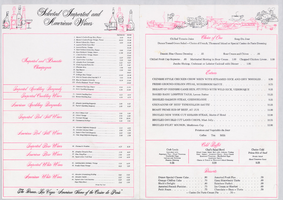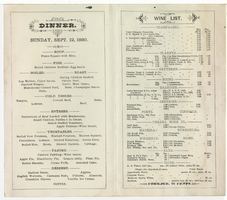Search the Special Collections and Archives Portal
Search Results

Newspaper clipping, NLV honoring Goynes for community contributions, Las Vegas Sun, June 19-21, 1998
Date
1998-06-19
Archival Collection
Description
Article by Adrienne Packer for Las Vegas Sun lauding the community contributions of Theron Goynes, dated June 19-21, 1998.
Text
Pagination
Refine my results
Content Type
Creator or Contributor
Subject
Archival Collection
Digital Project
Resource Type
Year
Material Type
Place
Language
Records Classification









